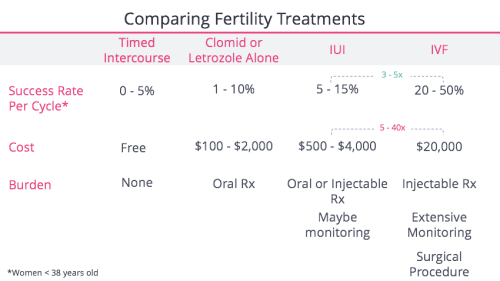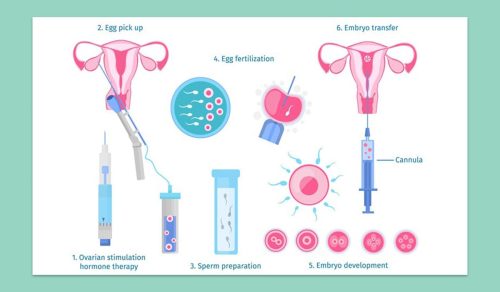What Does IVF Cost? Your Guide to Understanding In Vitro Fertilization Expenses
In vitro fertilization (IVF) is a life-changing option for many hoping to build a family, but the price tag can feel like a big question mark. If you’re wondering what IVF costs in the United States, you’re not alone—it’s one of the first things people ask when they start exploring fertility treatments. The truth is, the cost depends on a lot of factors, from where you live to the specifics of your treatment plan. In 2025, with advancements in technology and shifting insurance policies, the numbers are evolving, but one thing remains clear: understanding the full picture can help you plan better and feel more in control.
This guide dives deep into what IVF really costs, breaking it down step by step so you know what to expect. We’ll cover the basics, hidden expenses, ways to save, and even some fresh insights you won’t find everywhere else—like how new research and real-world trends are shaping the price in 2025. Whether you’re just starting to think about IVF or you’re ready to take the plunge, here’s everything you need to know about the dollars and cents behind this journey.
The Big Picture: What’s the Average Cost of IVF?
IVF isn’t a one-size-fits-all process, so the cost can vary widely. On average, a single IVF cycle in the United States in 2025 ranges between $12,000 and $25,000, not including medications or extra services. That’s a broad range, right? It’s because every clinic, every patient, and every treatment plan is a little different. For example, a basic cycle might include monitoring, egg retrieval, fertilization, and embryo transfer, but add-ons like genetic testing or donor eggs can push the total higher.
Here’s a quick snapshot of what you’re looking at:
- Base IVF Cycle: $12,000–$15,000 (covers the essentials like egg retrieval and embryo transfer)
- Medications: $3,000–$6,000 (varies based on your needs and dosage)
- Total with Meds: $15,000–$21,000 per cycle
But here’s the kicker: most people don’t get pregnant on their first try. Studies show the average patient goes through two to three cycles, which means the real cost could climb to $30,000–$50,000 or more. That’s a big number, but don’t let it scare you off just yet—there are ways to manage it, and we’ll get into those later.
Why such a wide range? Location plays a huge role. A clinic in New York City or Los Angeles might charge more than one in a smaller town. Plus, your age, health, and whether you need extras like donor sperm or a gestational carrier can shift the total. The good news? In 2025, more clinics are offering transparent pricing, and some states are stepping up with insurance mandates, which could lighten the load.
Breaking Down the IVF Process: Where Your Money Goes
To really get what you’re paying for, let’s walk through the IVF process and see how the costs stack up. Each step has its own price tag, and understanding them can help you budget smarter.
Step 1: Initial Consultation and Testing
Before you even start IVF, you’ll need a checkup to see what’s going on with your fertility. This usually includes blood tests, ultrasounds, and maybe a semen analysis for your partner. Expect to spend $250–$500 here, though some clinics bundle this into the cycle cost. It’s like the entry fee to figure out your game plan.
Step 2: Ovarian Stimulation and Medications
This is where your ovaries get a boost to produce multiple eggs. You’ll take injectable meds for about 10–14 days, and these aren’t cheap. The cost? Anywhere from $3,000 to $6,000 per cycle. Some folks need higher doses, especially if they’re over 35, which can nudge the price up. Fun fact: in 2025, generic versions of some fertility drugs are hitting the market, potentially saving you a few hundred bucks.
Step 3: Egg Retrieval
Once your eggs are ready, a doctor retrieves them in a quick procedure under anesthesia. This is usually included in the base cycle fee ($12,000–$15,000), but watch out—some clinics charge extra for anesthesia ($500–$1,000). It’s a small surgery, but it’s a big part of the process.
Step 4: Fertilization and Embryo Development
In the lab, your eggs meet the sperm (yours or a donor’s) to create embryos. This is also part of the base fee, but if you opt for intracytoplasmic sperm injection (ICSI)—where a single sperm is injected into an egg—it’s an extra $1,000–$2,000. ICSI is common if there’s male infertility involved, and it’s worth it for many.
Step 5: Embryo Transfer
The final step is placing the embryo into your uterus. This is included in the base cost, but a frozen embryo transfer (FET) later on might run $3,000–$6,000 if you’re saving embryos for another try. Freezing embryos is smart if you have extras—it’s like putting hope on ice for later.
Here’s a handy table to see it all at a glance:
| Step | Cost Range | What’s Included |
|---|---|---|
| Consultation/Testing | $250–$500 | Blood work, ultrasounds, semen analysis |
| Medications | $3,000–$6,000 | Hormone injections |
| Egg Retrieval | $12,000–$15,000 (base) | Procedure, anesthesia (sometimes extra) |
| Fertilization (ICSI) | $1,000–$2,000 (add-on) | Lab work, sperm injection |
| Embryo Transfer | Included in base | Placement into uterus |
| Frozen Embryo Transfer | $3,000–$6,000 | Later transfer of frozen embryos |
Hidden Costs You Might Not Expect
The base price is just the start. IVF comes with sneaky extras that can catch you off guard if you’re not prepared. Here are some costs that don’t always make the headlines:
Storage Fees for Frozen Embryos
Got extra embryos? Freezing them costs $500–$1,000 upfront, plus $200–$600 per year to keep them stored. It’s like renting a tiny freezer for your future family, and those fees add up over time.
Preimplantation Genetic Testing (PGT)
Want to check your embryos for genetic issues? PGT runs $1,000–$3,000, plus $200–$500 per embryo tested. It’s a game-changer for some, especially if you’re older or have a family history of genetic conditions, but it’s not cheap.
Travel and Time Off Work
If your clinic’s far away, gas, flights, or hotel stays pile up fast. One couple I heard about spent $2,000 traveling to a top clinic three states over. Plus, you might need unpaid days off for appointments—check your job’s leave policy.
Emotional Support
IVF can be an emotional rollercoaster. Therapy or support groups aren’t usually covered by insurance, but they’re worth it. A session might cost $100–$200, and trust me, having someone to talk to can make a difference.
These extras can turn a $15,000 cycle into a $20,000+ adventure. Planning for them now beats scrambling later.
What If You Need Donor Eggs, Sperm, or a Surrogate?
Sometimes IVF needs a little outside help, and that’s where costs really climb. Here’s what you’re looking at in 2025:
Donor Eggs
Fresh donor eggs can cost $35,000–$60,000, including donor compensation and agency fees. Frozen eggs are cheaper, around $15,000–$25,000. Why so pricey? Donors get paid for their time and effort, and the process is complex.
Donor Sperm
A vial of donor sperm is more affordable at $1,000–$1,500, but you might need a few tries. It’s a smaller piece of the puzzle, but it adds up.
Gestational Carrier (Surrogacy)
Using a surrogate can range from $60,000 to $150,000, covering medical fees, legal costs, and the carrier’s compensation. It’s a big investment, but for some, it’s the only path to parenthood.
These options are like premium upgrades—they’re amazing when you need them, but they stretch your budget. Clinics often offer payment plans or financing for these, so ask about that upfront.
Does Insurance Cover IVF? The 2025 Update
Insurance is the wild card in the IVF cost game. In 2025, 20 states have laws requiring some fertility coverage, and 14 of those include IVF. But there’s a catch: not all plans comply, especially if your employer is self-funded or exempt. Here’s the scoop:
- States with IVF Mandates: Places like New York, California, and Illinois often cover at least one cycle, sometimes more. Check your state’s rules—some cap coverage at $25,000 or limit it by age.
- No Mandate States: In states like Alabama or Idaho, you’re usually on your own unless your employer opts in.
- Federal Push: A 2025 executive order from the White House aims to expand IVF access, hinting at possible federal support soon. Stay tuned—this could shake things up.
Even with coverage, you might still pay out of pocket for meds or add-ons. Call your insurance provider and ask: “What’s my IVF coverage?” Get it in writing, too—details matter.
How Success Rates Affect Your Wallet
IVF isn’t a sure thing, and success rates tie directly to cost. The younger you are, the better your odds, which means fewer cycles and less money spent. Here’s what the data says for 2025, based on the latest CDC reports:
- Under 35: 50–52% live birth rate per cycle
- 35–37: 38–40%
- 38–40: 25–27%
- Over 40: 10–15%
If you’re 30, you might spend $15,000 and succeed on the first try. At 40, you could need three cycles—$45,000—before it works. Age isn’t the only factor, though. Lifestyle (smoking, weight) and clinic quality play a role. Picking a clinic with a high success rate might cost more upfront but save you in the long run.
Quick Quiz: What’s Your IVF Success Odds?
- Are you under 35? ✔️ Add 10 points.
- Healthy BMI? ✔️ Add 5 points.
- Non-smoker? ✔️ Add 5 points.
- Over 40? ❌ Subtract 10 points.
- Score 15–20? You’re in a strong spot. Below 10? Talk to your doctor about boosting your chances.
Ways to Cut IVF Costs Without Cutting Corners
IVF’s expensive, but you don’t have to break the bank. Here are practical ways to save in 2025:
Shop Around
Clinics vary in price and success rates. A place charging $12,000 with a 50% success rate beats one at $15,000 with 30%. Use online tools like FertilityIQ to compare.
Look for Discounts
- Multi-Cycle Packages: Some clinics offer 2–3 cycles for $20,000–$30,000—a deal if you need multiple tries.
- Military Discounts: Veterans often get 10–25% off at certain clinics.
- Shared Risk Programs: Pay a flat fee (e.g., $25,000) for up to three cycles, with a refund if it doesn’t work.
Explore Financing
Loans, credit cards, or clinic payment plans can spread the cost over months or years. Interest rates vary, so read the fine print.
Fertility Grants
Nonprofits like BabyQuest or Samantha’s Gift of Hope offer grants up to $15,000. Apply early—funds run out fast.
Tax Breaks
In 2025, medical expenses over 7.5% of your income are tax-deductible. IVF qualifies, so keep receipts. One couple I know saved $3,000 this way.
✔️ Do: Ask clinics about specials or sliding-scale fees based on income.
❌ Don’t: Skip meds to save money—it could tank your cycle.
The Global Option: IVF Tourism in 2025
Here’s something you might not have thought about: IVF abroad. In 2025, “fertility tourism” is booming, with countries like Mexico, India, and the Czech Republic offering cycles for $3,000–$8,000. Even with travel, it’s often cheaper than the U.S. average.
- Mexico: $5,000–$7,000 per cycle, close to the border.
- India: $3,000–$4,000, with top-notch clinics in cities like Mumbai.
- Czech Republic: $4,000–$6,000, a hotspot for Europeans and Americans alike.
Pros? Huge savings and sometimes faster service. Cons? Language barriers, travel risks, and less oversight. Research clinics hard—look for international accreditation (like JCI) and patient reviews. One family saved $10,000 going to Mexico, but they planned it like a military operation to avoid hiccups.
The Mental Health Price Tag: An Overlooked Cost
IVF isn’t just about money—it’s an emotional investment, too. Studies from Stanford in 2024 found that women who don’t conceive after IVF are 48% more likely to need mental health support five years later. The stress of waiting, hoping, and sometimes failing takes a toll.
- Therapy: $100–$200 per session, often weekly during treatment.
- Support Groups: Free or low-cost online, like Resolve.org.
- Self-Care: Yoga, meditation apps—$10–$20/month can help.
I talked to Sarah, a mom who went through three cycles. She said, “The money hurt, but the waiting nearly broke me. Therapy was my lifeline.” Budgeting for your mental health isn’t optional—it’s part of the journey.
2025 Trends: What’s Changing the IVF Cost Landscape?
IVF costs aren’t static, and 2025 is bringing some shifts worth knowing about:
Tech Advancements
AI is making waves in embryo selection, potentially boosting success rates and cutting the need for extra cycles. Clinics adopting this might charge $1,000–$2,000 more, but it could pay off.
Insurance Expansion
That White House order I mentioned? It’s pushing for lower out-of-pocket costs. If it passes, expect more plans to cover IVF, especially for federal employees. Some predict a 10–20% drop in patient costs by 2026.
At-Home Monitoring
New devices let you track your cycle at home, reducing clinic visits. One kit costs $200–$500 upfront but could save $1,000 in monitoring fees. It’s not everywhere yet, but it’s growing.
These trends mean costs might stabilize or even dip slightly in the next few years—good news if you’re planning ahead.
Real Stories: What IVF Cost Three Families
Numbers are great, but stories hit home. Here’s what IVF cost three real people in 2025:
Emily, 32, California
- Total: $18,000 (one cycle, insurance covered half)
- Story: “My job’s plan covered the basics, but meds were $4,000 out of pocket. We got lucky first try—our son’s worth every penny.”
Mark and Jen, 38, Texas
- Total: $45,000 (three cycles, no insurance)
- Story: “No mandate here, so we paid it all. Cycle three worked after PGT. We took out a loan, but holding our twins makes it fade.”
Lisa, 41, New York (Donor Eggs)
- Total: $60,000 (two cycles, donor eggs)
- Story: “Age meant donor eggs, and it wasn’t cheap. A grant covered $10,000, and we’re still paying off the rest. Our daughter’s smile keeps us going.”
Every journey’s unique, but these show the range—and the hope—at play.
Your IVF Cost Checklist: Plan Like a Pro
Ready to dive in? Here’s a step-by-step checklist to keep your costs in check:
- Call Your Insurance: Ask about coverage, limits, and pre-approvals.
- Get Quotes: Contact 2–3 clinics for detailed breakdowns.
- Budget Extras: Add $5,000–$10,000 for meds, tests, and surprises.
- Explore Aid: Apply for grants or financing early.
- Track Spending: Save receipts for taxes or reimbursements.
Poll: What’s Your Biggest IVF Cost Worry?
- A) Medications
- B) Clinic Fees
- C) Hidden Costs
- D) Multiple Cycles
Drop your answer in the comments—I’m curious!
The Value of IVF: Is It Worth It?
Here’s a question no one else is asking: what’s a baby worth to you? A 2024 study in Reproductive Biomedicine pegged the “willingness to pay” for a child at $50,000–$100,000 for most couples. IVF’s price tag fits right in that range for many. It’s not just money—it’s a shot at a dream.
I crunched some numbers myself: if a $20,000 cycle has a 40% success rate, that’s $50,000 per baby born. Compare that to adoption ($30,000–$50,000) or surrogacy ($100,000+), and IVF holds its own. Plus, new tech and coverage could drop that “cost per success” soon.
Wrapping Up: Your Next Step
IVF costs a lot—there’s no sugarcoating it. But with the right info, you can make it work. In 2025, a single cycle might run $15,000–$25,000, but extras, multiple tries, or special needs can push it higher. The key? Plan ahead, explore options, and don’t go it alone—clinics, grants, and even friends can help.
Think of it like a road trip: you need a map, some cash, and a little grit. This guide’s your map. Now, grab a coffee, call a clinic, and start plotting your route. You’ve got this—and that family you’re dreaming of? It’s closer than you think.




